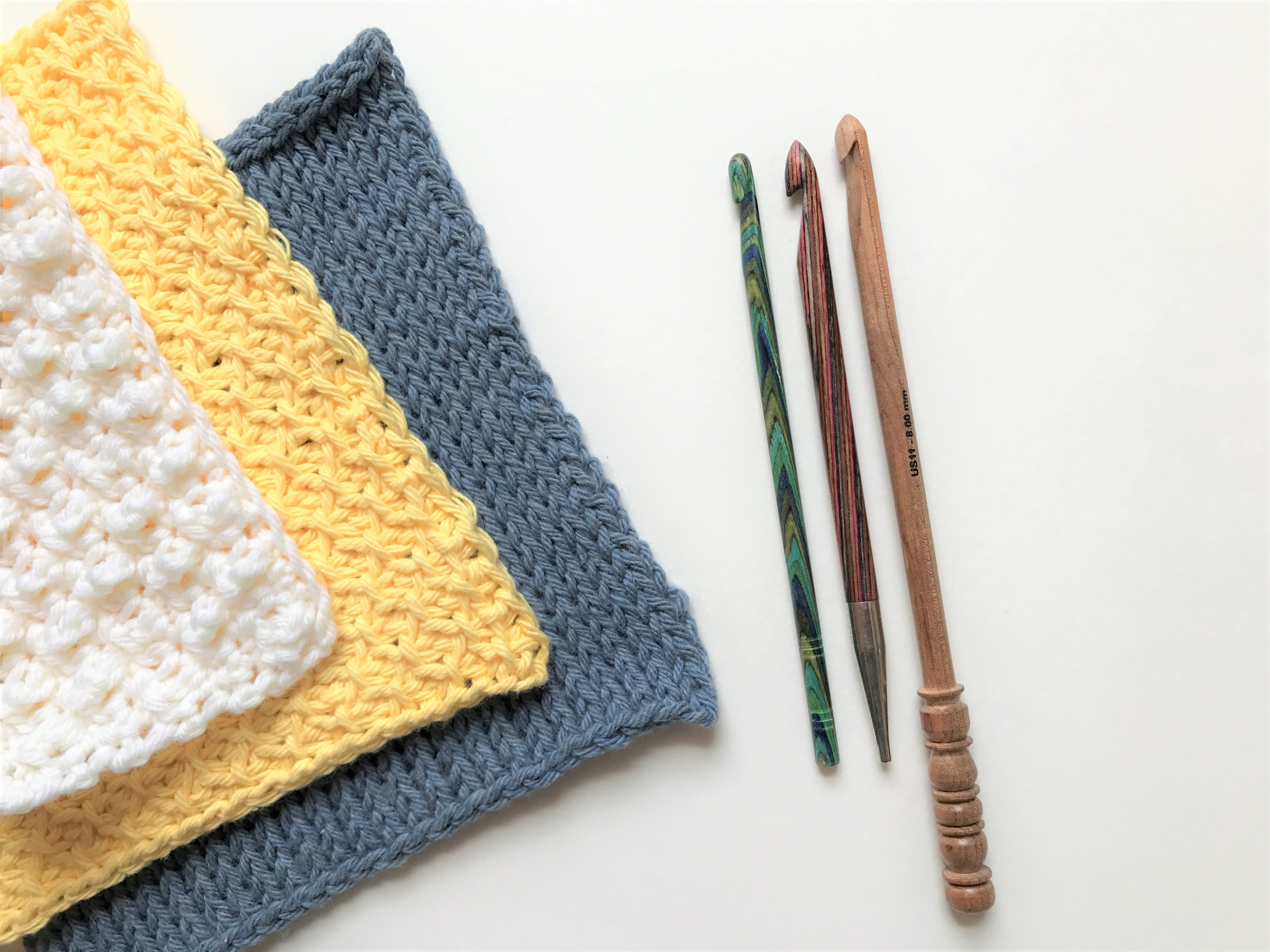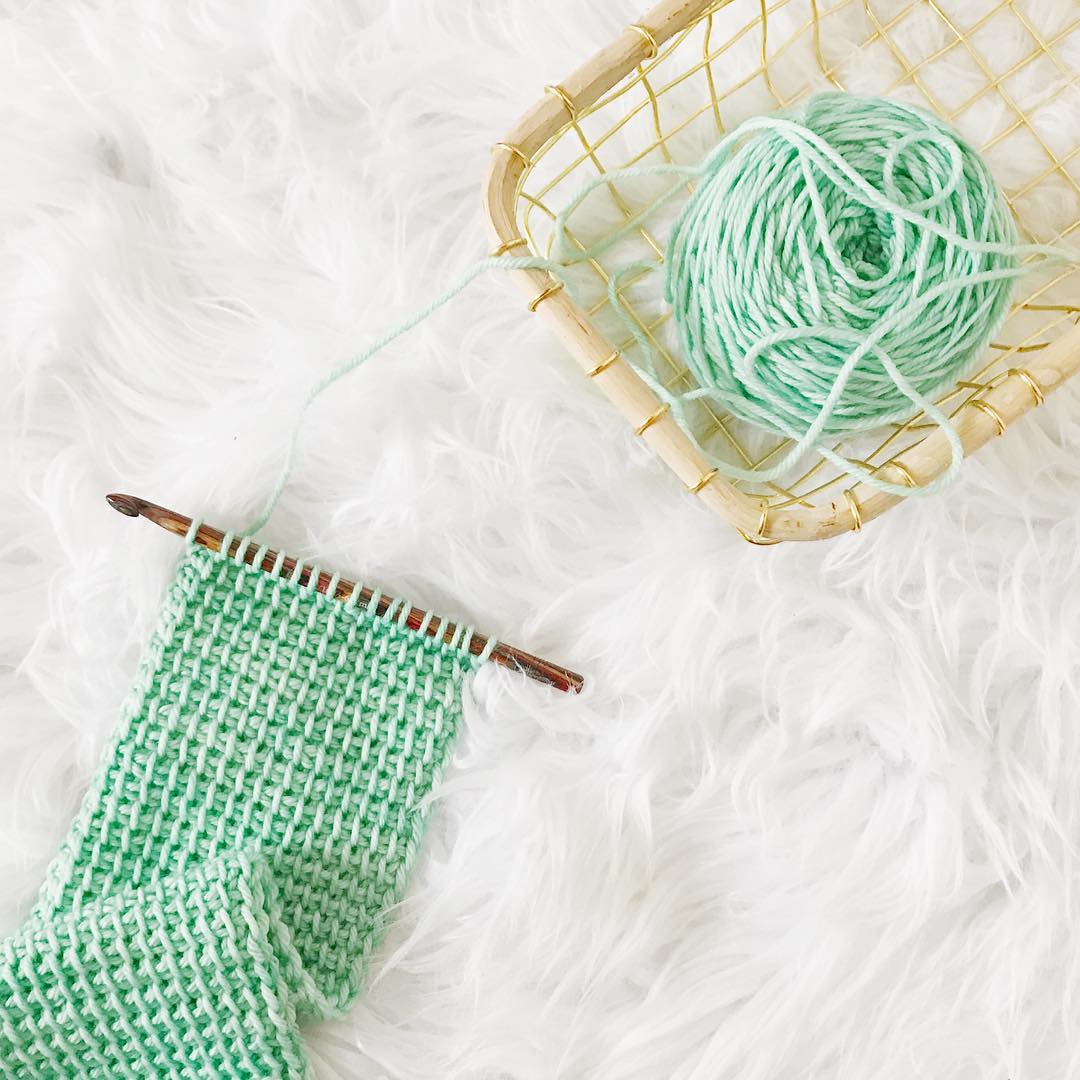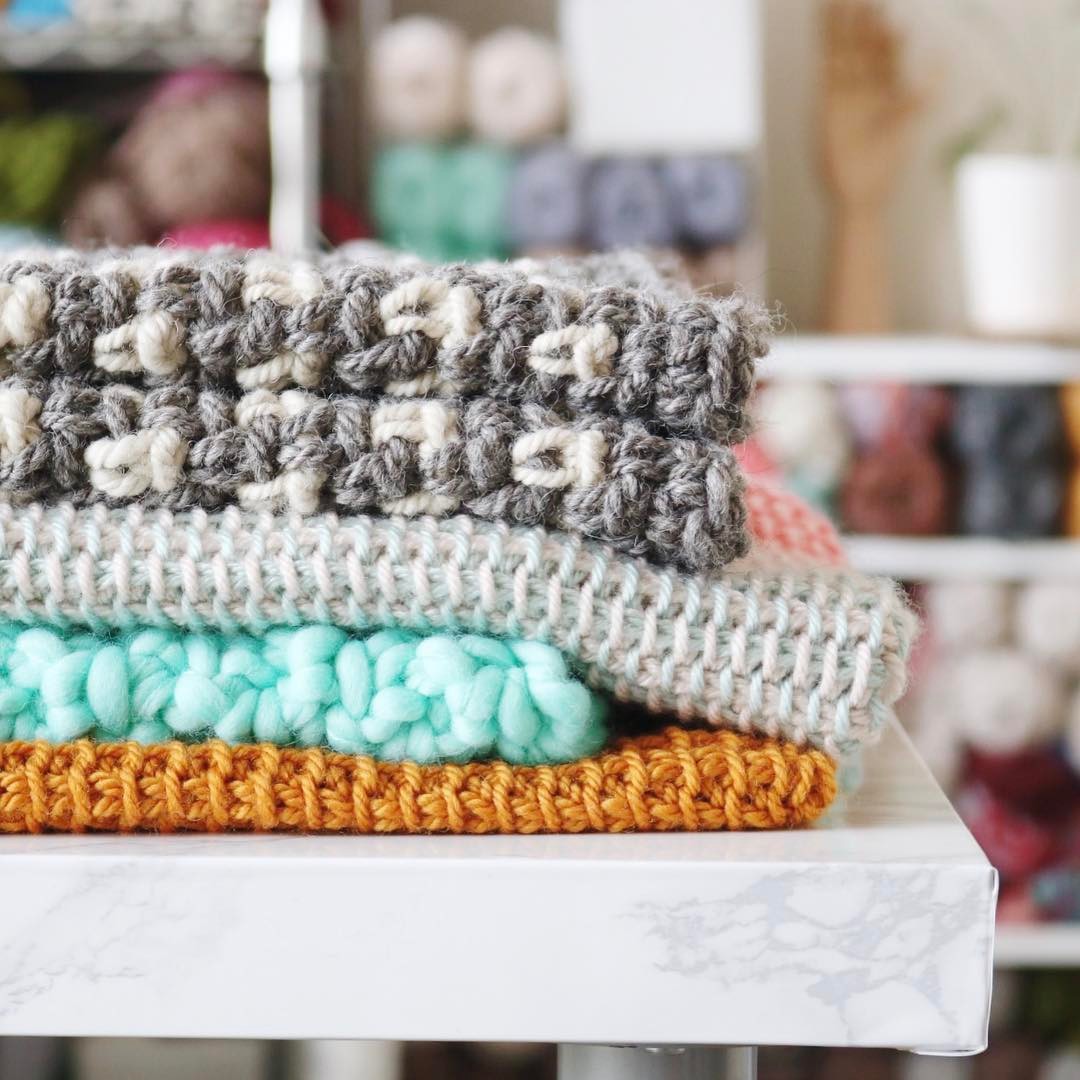Tunisian crochet is often sold as an additional skill for traditional crocheters. But are these crafts really all that different? Here are a few things to note about the differences between Tunisian crochet and traditional crochet.

Tunisian Crochet vs. Traditional Crochet: What’s the Difference?
Difference 1: The Tools
For those learning Tunisian crochet, the difference in the tools is obvious.
Traditional Crochet:
Traditional crochet uses a hook that is typically about 6″ long. There’s a hook on one end, and the other end is straight. The hooks can be made of a variety of materials — such as aluminum, wood or plastic — and sometimes have an ergonomic handle.
Tunisian Crochet:
Tunisian crochet, however, is 11″ to 14″ long. It has no thumb rest but has a knob on the end to prevent stitches from falling off. It is smooth from the shaft through the handle and resembles a knitting needle with a crochet hook head instead of a point.
Difference 2: The Construction
Once you’ve finally made sense of the hooks, it’s time to tackle the actual construction of Tunisian crochet.
Traditional Crochet:
In traditional crochet, you handle stitches one at a time. Typically only one stitch is “live.” In other words, for most patterns, one stitch is completed before the next stitch is made. At the end of a row, you turn the work, make a series of chains, and continue the pattern down the row.
Tunisian Crochet:
In Tunisian crochet, however, stitches are worked onto the hook during the forward pass, then worked off of the hook for the return pass. On top of that, Tunisian crochet is always worked on the front side, or right side, of the project. Working the forward pass feels a lot like knitting, as stitches accumulate on the hook. Once you complete the return pass, the stitches are considered “live” until you work them with more stitches or bind off.
Unlike knitting, the Tunisian stitches do not ultimately support the stitches below them. If you drop a stitch in Tunisian crochet, you can can easily recover it or rip out just one row to fix it.

Difference 3: The Fabric
To the untrained eye, there isn’t much difference between Tunisian crochet and traditional crochet fabrics. Some might even confuse Tunisian crochet with knitting or weaving. But in practice, the most significant difference between Tunisian crochet and traditional crochet is the fabric that these techniques produce.
If you made a Tunisian crochet swatch and a traditional crochet swatch from the same yarn and same size hook, you’d notice several obvious differences:
- Stretch: For example, traditional crochet fabric has plenty of stretch in all directions. Due to the bars created by the return pass in Tunisian crochet, the fabric does not stretch nearly as much horizontally, though there is plenty of stretch vertically. Because of this, Tunisian crochet fabric has much more memory (can bounce back easier) when compared to traditional crochet.
- Edges: Tunisian crochet also has a natural, neat border on each edge of the fabric. The construction of the first and last stitches of each row produces a series of V’s like the tops of traditional crochet stitches. These V’s make for a polished look to Tunisian fabric and aid in joining fabric strips together and adding borders.
Tunisian Crochet Pitfalls:

There is always the dreaded curl that all beginners have to contend with. Consider the Tunisian simple stitch (Tss), which can be compared to the traditional single crochet.
The Tunisian simple stitch is made by pulling up loops in the front vertical bars on the front side of the work. This tension, row after row, causes the edges of the work to curl forward, which can be very frustrating for crocheters. For the most part, traditional crochet has minimal curling and can be easily relaxed with some steam blocking. Tunisian crochet often has to be blocked more aggressively to keep the curl at bay.
As different as they are, Tunisian crochet and traditional crochet are more complements than competitors. The 400+ stitches available in Tunisian crochet broaden the scope when it comes to crochet design and the learning curve from one craft to the next is nearly nonexistent.
Have you given Tunisian crochet a try? How would you compare it to traditional crochet?
You might also be interested in: How to Foundation Single Crochet (FSC) and Ditch the Chain
The curl can be prevented or at least made a lot less in Tunisian crochet by going up at least 2 sizes in hook compared to what the skein label tells you too use. I'm perplexed that is not mentioned in this article
I much prefer creating Tunisian crochet to traditional crochet, but I do "hate" the curl. Until reading the intro on this page, I did not even think that there were more Tunisian stitches. I am going to try to find those.
I am a advanced crocheter and find Tunisian crochet very confusing. I guess I am just used to traditional crochet.
I have done the Tunisian stitch and I love it. Yes I do have a problem with it curling, but my mom told me to unroll the swatch and place a towel on it and steam it to relax that swatch.
Can a tunisian crochet pattern be converted to traditional crochet or knit?
I'm an advanced crocheter and have recently taken up learning Tunisian crochet after running into a pattern I have absolutely fallen in love with. After some practice, I finally broke down and bought the pattern to start my first project in Tunisian crochet. To my dismay, the pattern is calling for 36 skiens of yarn! I never realized that Tunisian crochet used so much yarn compared to traditional crochet. Do you know if it is possible to convert the Tunisian crochet pattern into traditional crochet? I've not been able to find anything online :(
I’m an advanced knitter and crocheter but would like to learn Tunisian crochet too
I am a beginner at Tunisian crochet, I find it very different to traditional crochet. Tunisian crochet seems to make more a fabric item than traditional style. I love doing this craft and will look forward to learning as I go.